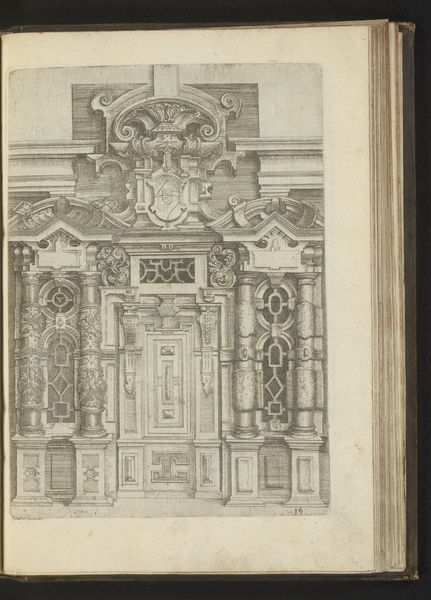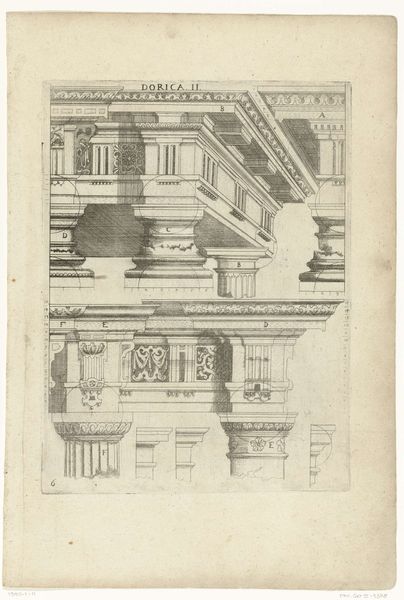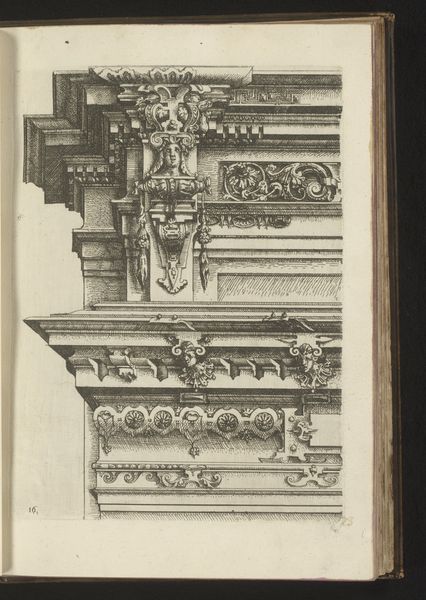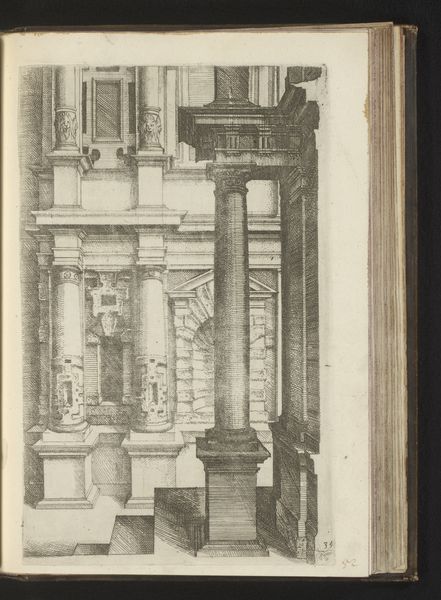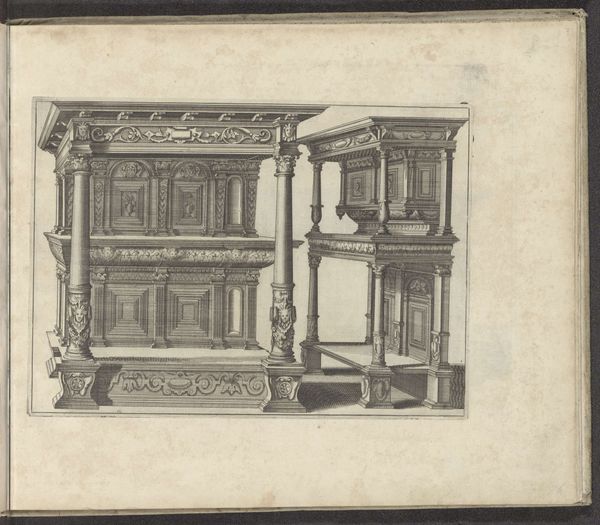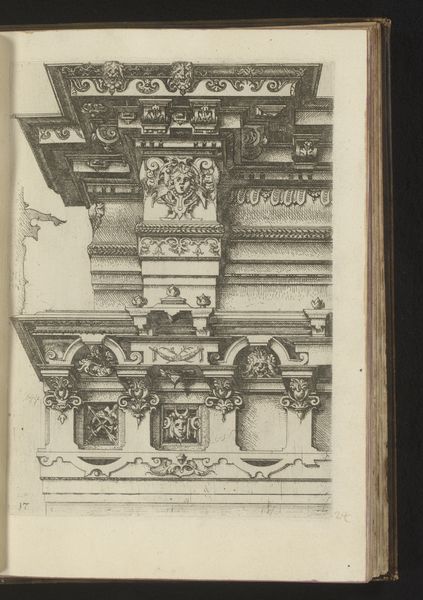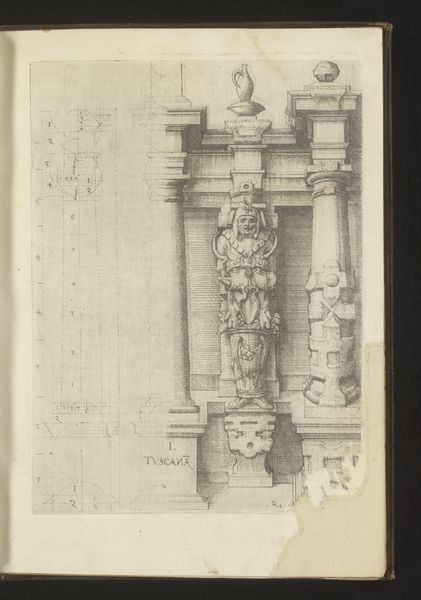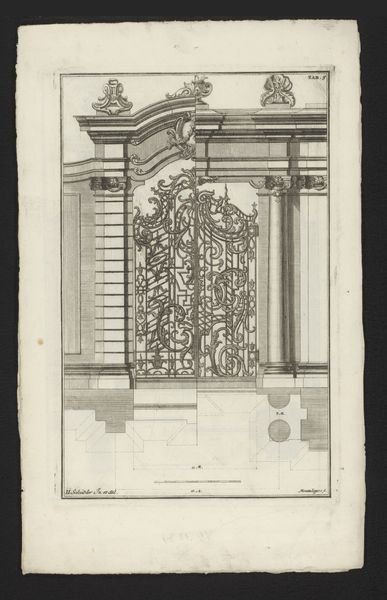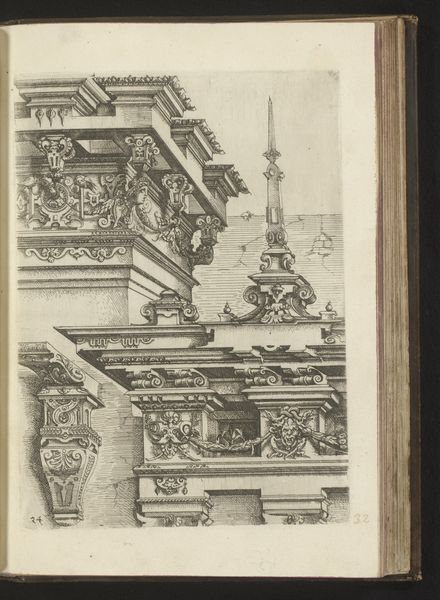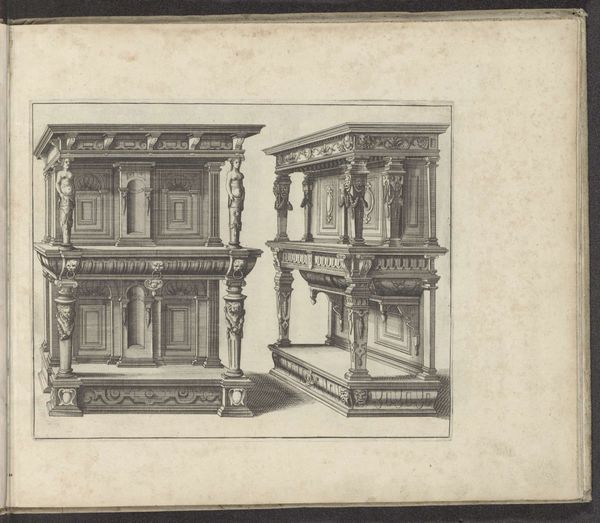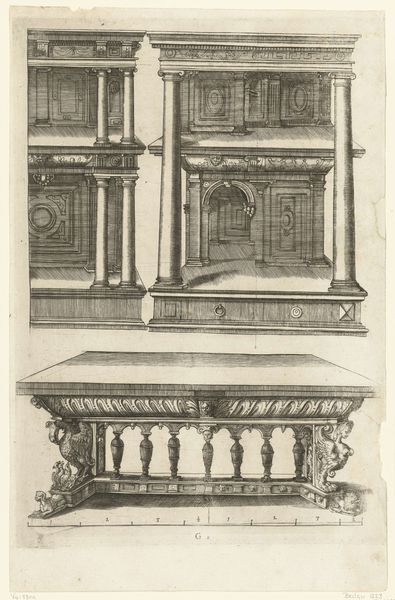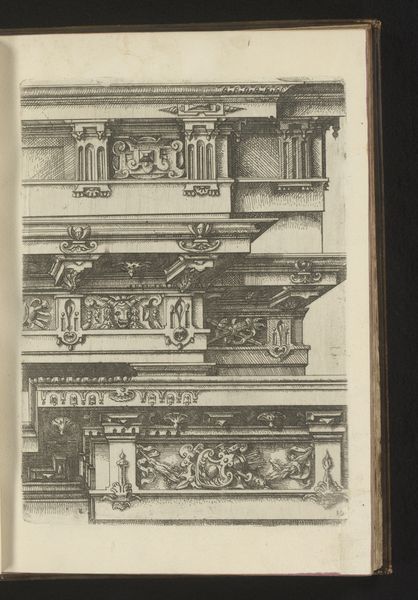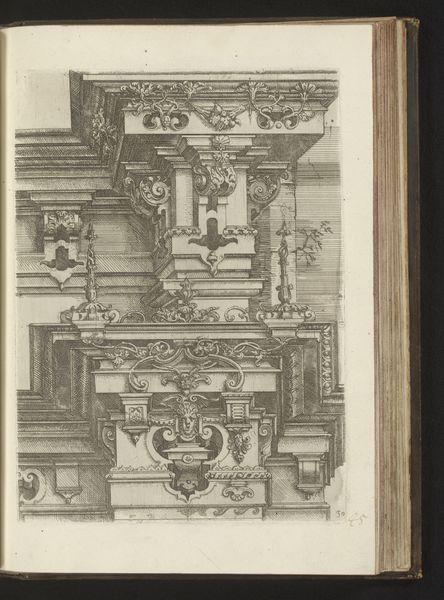
Bovenste twee verdiepingen van een gelede wand in de composiete orde gedecoreerd met nissen, daaronder pilasters in Ionische orde met een kariatide en rolwerk 1593 - 1595
0:00
0:00
drawing, paper, ink, engraving, architecture
#
pen and ink
#
drawing
#
paper
#
form
#
11_renaissance
#
ink
#
geometric
#
line
#
northern-renaissance
#
engraving
#
architecture
Dimensions: height 279 mm, width 179 mm
Copyright: Rijks Museum: Open Domain
Wendel Dietterlin created this print, "Bovenste twee verdiepingen van een gelede wand in de composiete orde gedecoreerd met nissen, daaronder pilasters in Ionische orde met een kariatide en rolwerk," around the late 16th century. Dietterlin, situated in the German Renaissance, was deeply influenced by the architectural theories of his time. This print showcases an elaborate architectural design, typical of the era's fascination with classical orders, yet Dietterlin infuses it with his unique, somewhat unconventional style. The female caryatid figure supporting the structure brings issues of gender and power to the forefront. Traditionally, caryatids were stone carvings of women used as architectural supports, a literal embodiment of women bearing the weight of structures, and, metaphorically, society. Dietterlin’s choice to include this figure invites contemplation on the roles and expectations of women in the 16th century. Are they merely decorative, or are they foundational? The emotional weight of this question resonates through the stoic pose of the caryatid. This artwork pushes us to consider the narratives we build into our structures and the people we ask to uphold them.
Comments
No comments
Be the first to comment and join the conversation on the ultimate creative platform.
